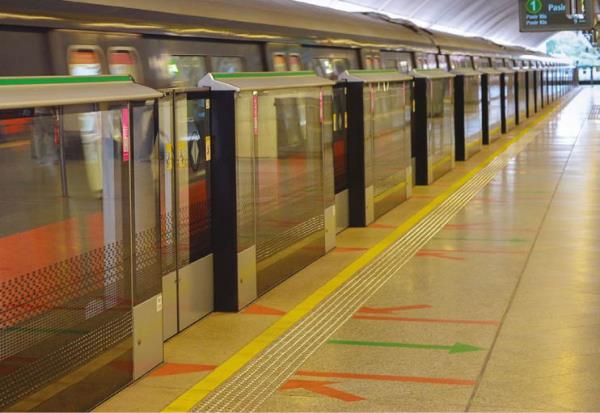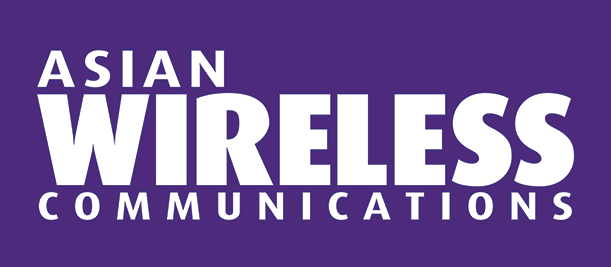14 April 2025

Since its inception in 1987, the Singapore Mass Rapid Transit (SMRT) network has served as the backbone of the city’s public transportation system, carrying millions of passengers annually.
The North-South and East-West Lines (NSEWL), the oldest and most heavily trafficked routes, were in need of a comprehensive modernization to meet growing passenger demands. This renewal project — the largest ever undertaken on a live MRT system — aimed to increase train frequency, enhance passenger capacity, and improve the commuter experience. A key component of this initiative was the deployment of robust cellular connectivity, ensuring seamless mobile communications for passengers across underground platforms and tunnels.
High-density, multi-operator coverage
To achieve the required connectivity, SMRT selected the JMA Distributed Antenna System (DAS) from JMA Wireless. Designed to deliver uninterrupted, high-capacity mobile coverage, JMA DAS was the ideal solution to overcome the technical challenges of deploying a wireless network across miles of tunnels and 18 underground stations.
Deploying a wireless system within the NSEWL lines presented multiple challenges. The underground infrastructure, constructed primarily from concrete and steel, severely obstructed external cellular signals, creating coverage gaps across stations and tunnels. Additionally, densification — where large numbers of passengers simultaneously demand high-bandwidth mobile connectivity — was a major issue during peak commuting hours.
The project required a versatile solution that could support multiple mobile operators, diverse frequency bands, and next-generation network technologies. Furthermore, logistical constraints made deployment highly complex. The transit system operates nearly 24/7, leaving only a four-hour window each night for installation work. This severely restricted project timelines and required meticulous coordination between engineering teams and SMRT scheduling authorities to ensure efficient deployment without disrupting daily operations.
JMA DAS delivers scalable connectivity
The JMA DAS has enabled seamless mobile communication across the NSEWL network. This modular system integrates multiple wireless technologies, including DCS, LTE, and UMTS, while supporting four frequency bands: EGSM900, DCS1800, UMTS2100, and LTE2600. Designed for future-proof scalability, the system was initially deployed with 3G capability, followed by 4G integration in phase two. Its adaptive architecture ensures a smooth transition to 5G without requiring major infrastructure overhauls.
The network infrastructure consists of a Master Unit (MU), which consolidates various wireless technologies and bands, linked via optical fibre to 33 four-band low-power Remote Units (RU). A total of 36 sectors were deployed, with 18 dedicated to tunnel coverage and 18 allocated to underground stations. The system’s fibre-optic backbone significantly reduces the amount of fibre cabling required — cutting fibre needs by over 50% compared to conventional systems — resulting in lower costs and faster deployment.
Each Remote Unit was custom-engineered with separate Rx (receive) and Tx (transmit) ports, optimizing signal strength, data throughput, and coverage reliability. Additionally, leaky coaxial cables and strategically placed antennas were implemented to ensure uninterrupted cellular coverage across tunnels and enclosed underground spaces. The multi-operator configuration seamlessly integrates Singapore’s leading mobile providers — SingTel Mobile, MobileOne, and StarHub — ensuring a unified and high-performance network for all commuters.
Despite the strict time constraints on installation, the project was executed through two specialized teams, each comprising installers, supervisors, and SMRT safety officers. This coordinated approach allowed the DAS infrastructure to be deployed efficiently within the limited nightly work windows.
Future-ready transit
Since its deployment, JMA DAS has successfully delivered seamless mobile connectivity across Singapore’s busiest transit corridors, supporting millions of daily commuters. The system maintains low-latency, high-bandwidth connections, even during peak congestion periods, enabling passengers to enjoy uninterrupted voice calls, high-speed data access, and real-time mobile transactions.
The project’s phased rollout allowed for the smooth introduction of 3G and 4G services, with built-in 5G readiness ensuring long-term scalability. Unlike traditional DAS systems that require significant infrastructure replacement for upgrades, the JMA DAS modular design enables future network enhancements with minimal additional investment.
Beyond technical performance, the solution delivers operational and economic efficiencies by minimizing fibre deployment costs, streamlining field testing, and enabling remote unit power autonomy. The high-reliability architecture ensures network continuity while reducing maintenance requirements, reinforcing SMRT’s commitment to an enhanced passenger experience.
Moreover, as 5G adoption accelerates, the scalable architecture of JMA DAS ensures that Singapore’s MRT remains at the forefront of next-generation connectivity, paving the way for advanced mobile services, smart transit applications, and a more connected passenger experience.







